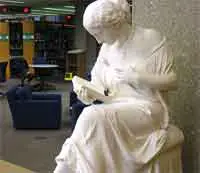 What is Monetary Policy?
What is Monetary Policy?
Interest rates regulations and money availability for the prevention of hard market crashes are often referred to as monetary policy. The United States establishes monetary policy through the United States Federal Reserve. Various countries use similar agency or system to monitor their monetary policy. The importance of monetary policy is often argued. However, it’s most evident value is to provide the government control in the market. Countries with free market economies often value monetary policy.
There are typically two ways in managing monetary policy and typically one way is utilized. An institution granted responsibility over monetary policy may purchase bank securities. Using this process will help banks to gain more reserves. This provides banks the capability to lend to other institution in need of capital. On the other hand, the other way to manage monetary policy is by setting interest rates at a particular level. This process directly affects the economy of a nation.
Execution of monetary policy is done via a chairman and a board. Various nations often have this same process as in the United States. In the US, the Federal Reserve chairman is appointed by the president of the US. The committee under the Federal Reserve sets or determines the interest rates. The rate will depend on the analysis done and presented. Interest rates may stay the same, lowered or increased depending on what will keep the economy sound. The United States Federal government does not meddle with the Federal Reserve. The only thing the Federal government has to do with the Federal Reserve is to make appointments. However, in some countries, this independent model is not followed. Typically, some governments control the institution given responsibility for the monetary policy.
The main responsibility of monetary policy is to oversee how the economy performs. Difficult times such as when the economy is on its downtrend, monetary policy may dictate to lower the interest rates. This will encourage borrowing that will provide and create jobs for other people or institutions. When the time comes that the economy gradually goes well, then the monetary policy may also gradually increase the interest rates. The theory is that too much growth in the economy may result to a hard crash and therefore they must maintain a balance by increasing the interest rates.
On the other hand, institutions in charge of monetary policy must keep in mind that inflation and interest rates are directly related to inflation at an immense degree. Lower interest rates will make it easier for others to borrow and therefore money is handed out around without difficulty. This will lead to oversupply and devalues the money. This will result to an increase in inflation. To counter such increase in inflation rate, the interest rates must be increased. An increase in the interest rates will result to difficulty in acquiring money. Therefore, less money will pass around. In turn, this will raise the value of the money. The idea or theory of supply and demand applies, in which less money flowing will mean an increase in its value.










Leave a Reply